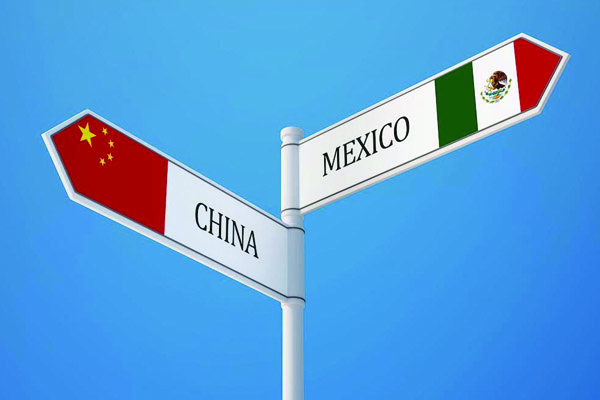When you think of outsourcing manufacturing operations, what country do you typically think of? China? Vietnam? Philippines? Yes, Asia is typically the go-to region for companies looking to cut costs by outsourcing production processes – and for good reason. Asia possesses both the labor and raw material resources to make the region an effective substitute to higher cost labor in the U.S. and the limited availability of certain raw materials in North America.
While outsourcing to low-cost countries such as China has its benefits (i.e. labor/overhead costs, raw material costs, scalability, freeing up the business’ time to focus on other critical functions, etc.) it comes with challenges as well. Lead times, language barriers, time zone differences, IP integrity, and a general lack of physical presence make outsourcing certain functions a constant struggle for US-based manufacturers and can outweigh the initial savings gained over the long-term. Companies oftentimes look at the price-tag of outsourcing functions such as IT support or manufacturing assembly work, figuring the decision is obvious. However, to minimize risk and to optimize/streamline domestic manufacturing operations it is important to weigh the pros and cons of outsourcing, especially in deciding which low-cost region to outsource to, which processes to outsource, and which partner(s) to use.
As the industry changes and the outsourced business model matures, domestic manufacturing companies have begun to consider alternative options to outsourcing in Asia given the inherent challenges that have to be overcome in order to benefit from their low costs. The aforementioned challenges that come with outsourcing business functions across the globe have nurtured the growth of an emerging trend – the nearshoring model. Nearshoring is an alternative to US trade/outsourcing to Asia by shifting the outsourcing of production, assembly, and other business functions and processes to our neighbors in Mexico and Canada and vise-versa. With the establishment of NAFTA in the early 1990’s came the development of transportation and telecommunication infrastructure through the CANAMEX corridor along with IP protection provisions and the elimination of tariffs on the vast majority of exports between the three countries. As a result, trade barriers were reduced, fostering the growth of inter-North American trade.
The gap between Chinese and Mexican labor rates in the late 20th and early 21st centuries has closed, and then reversed. With the maturation of the Chinese manufacturing industry, they have seen an accompanying demand for a higher wage for skilled labor. From about 2000 and on, Chinese labor rates have steadily increased while the Mexican labor rate has remained relatively stagnant. In fact, multiple studies have shown the average Mexican labor pay-rate dropping below that of China’s. Moreover the Mexican labor force maintains a competitive edge over China from a productivity per worker standpoint year- over-year.
Though a gap a still persists from a raw material and natural resource prospective, the wage rate shift marks a significant turning point in the traditional outsourcing school of thought. This has been further compounded in the Yuan/Peso exchange rate where the Peso has continued to steadily weaken against the Yuan over the past five years making it even more affordable to produce in Mexico. Other factors such as the natural gas costs per MMBTU steadily decreasing for Mexico and increasing in China over the past 10-15 years gives an additional cost advantage to Mexico from an operating cost standpoint.
The list of the tangible benefits of nearshoring goes on: Other advantages include transit times being shortened from 2-3 weeks to less than one day. Intellectual Property is protected by Mexican authorities and IP laws are more effectively enforced than in China and other Asian countries. Social responsibility and strict child labor laws are prevalent in their 48 hour week.
The geographical proximity of Mexico to the US also gives some less tangible benefits to US manufacturing companies looking to nearshore in Mexico. Let’s say it is 11:30 am Eastern Standard Time in Philadelphia and approaching lunchtime. Meanwhile its 11:30 PM in China and your business partners are fast asleep. Any questions that you have for your Asian manufacturing partner will have to remain on hold until the following day and the answer will come while you are long off the clock. This inherently makes communication more difficult and extends response times. Mexico meanwhile shares the same time-zones as the US split up into Eastern, Central, Mountain, and Pacific. The Mexican and US cultures also have many more similarities than differences when compared to the US/Chinese cultures which further the ease of doing business (i.e. more commonly English speaking, language and numbers use same characters, similar holiday schedules, at most a few hour flight away, etc.).
When you couple the labor and productivity rates of the Mexican workforce with the less tangible factors that make doing business in Mexico much easier than with China, old school assumptions about outsourcing to low cost countries requires a new look.
There’s no doubt that nearshoring presents countless benefits over the traditional practice of outsourcing to Asian countries. In my next blog post, we’ll discuss some of steps to take in order to make sure your Mexico supplier sourcing initiative is successful.
Source: http://buyersmeetingpoint.com/blogs/bmps-qthe-pointq/entry/nearshoring-why-now




